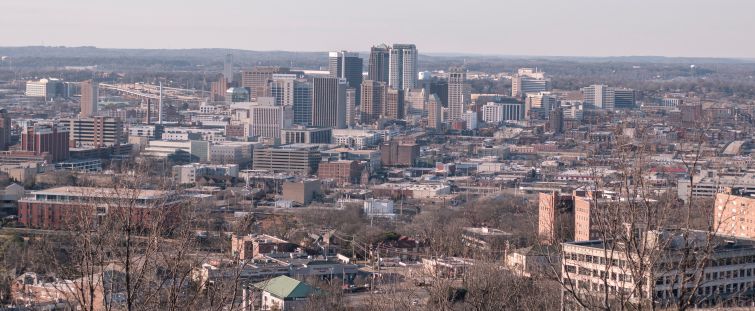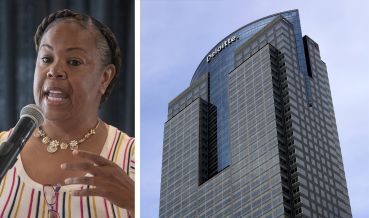CRE Distress Mounts in Largest MSAs
By Marc McDevitt March 13, 2023 2:29 pm
reprints
CRED iQ monitors distressed rates and market performance for nearly 400 U.S. metropolitan statistical areas (MSAs), covering over $900 billion in outstanding commercial real estate (CRE) debt.
Distressed rates (delinquency plus special servicing percent) include loans that are specially serviced, delinquent, or a combination of both. Distressed rates and month-over-month changes for data as of February for the 50 largest MSAs were broken out by property type for a granular view of distress by market and sector.
Distress became more prevalent in a majority of primary markets during February. Of the 50 largest MSAs tracked by CRED iQ, 34 of those markets exhibited comparatively higher levels of distress in CRE loans than one month prior. The average month-over-month increase in distressed rates for these 34 markets was approximately 21 basis points.
The Birmingham, Ala., MSA (plus 1 percent) exhibited the highest month-over-month increase in distress. Other notable markets with increased distress levels last month included Pittsburgh (plus 0.8 percent), Memphis (plus 0.7 percent), and Los Angeles (plus 0.7 percent).
There were 16 MSAs among the top 50 that exhibited month-over-month improvements in distressed rates. These included Portland, Ore. (minus 2.4 percent), Cleveland (minus 2.3 percent), and San Francisco (minus 1.7 percent). Despite last month’s improvement, Cleveland continued to have one of the highest distressed rates among all markets that were tracked, with 8.4 percent of CRE loans that were either delinquent or specially serviced.
For a more granular analysis of the top 50 markets, CRED iQ further delineated individual markets’ distressed rates by property type for a comprehensive view by market sector. Headline risk from office markets have dominated news cycles since year-end 2022. Thematic evidence of office distress was apparent in February data with three office markets exhibiting significant month-over-month increases in distress — Birmingham (plus 4.6 percent), Columbus, Ohio (plus 4.3 percent), and Memphis (plus 4.1 percent).
The increase in distress in the Birmingham market was impacted by a $22.5 million loan secured by Chase Corporate Center, a 211,257- square-foot office property. The loan defaulted at maturity in February 2023 and subsequently transferred to special servicing.
Refinancing efforts for the Chase Corporate Center may have been hindered by the relatively short remaining lease term of the property’s largest tenant, Cigna, which accounts for 34 percent of the property’s gross living area. Cigna’s lease is scheduled to expire in November 2024, less than two years after loan maturity.
Despite more attention paid to the office market, five of the 10 largest month-over-month increases in distress were in the hotel sector. In Birmingham, hotels exhibited the sharpest increase (plus 9.2 percent) in February following the special servicing transfer of a $10.4 million loan secured by Hotel Indigo Birmingham due to an imminent monetary default.
Additionally, two Virginia Beach hotel loans with the same sponsor, totaling $22.2 million, became 30 days delinquent in February. The delinquencies contributed to the distressed rate for the Virginia Beach hotel market increasing 5 percent.
The Portland retail market and the Cleveland office market were among markets exhibiting the highest levels of improvement in distress last month. With regards to the Portland retail market, a $211 million loan secured by the Clackamas Town Center returned to the master servicer in January after its maturity date was extended from November 2022 to October 2024. The loan is secured by a 1.4 million-square-foot regional mall located in Happy Valley, Ore.
The Minneapolis MSA had the highest overall distressed rate at 20.7 percent, which was slightly higher than the previous month. Birmingham (11.4 percent), Milwaukee (8.9 percent), Cleveland (8.4 percent), and Charlotte (7.9 percent) comprises the remaining markets with the highest rates of distress. Office and lodging distress were primary drivers in the ascension of Birmingham’s ranking of distress.
The Salt Lake City MSA (0.1 percent) displaced Sacramento, Calif., as the market with the lowest percentage of distress among the top 50 MSAs. A modest increase in distress in the Sacramento market pushed the MSA to the fourth-lowest ranking of distress among the top 50 markets.
Marc McDevitt is a senior managing director at data analytics firm CRED iQ.


